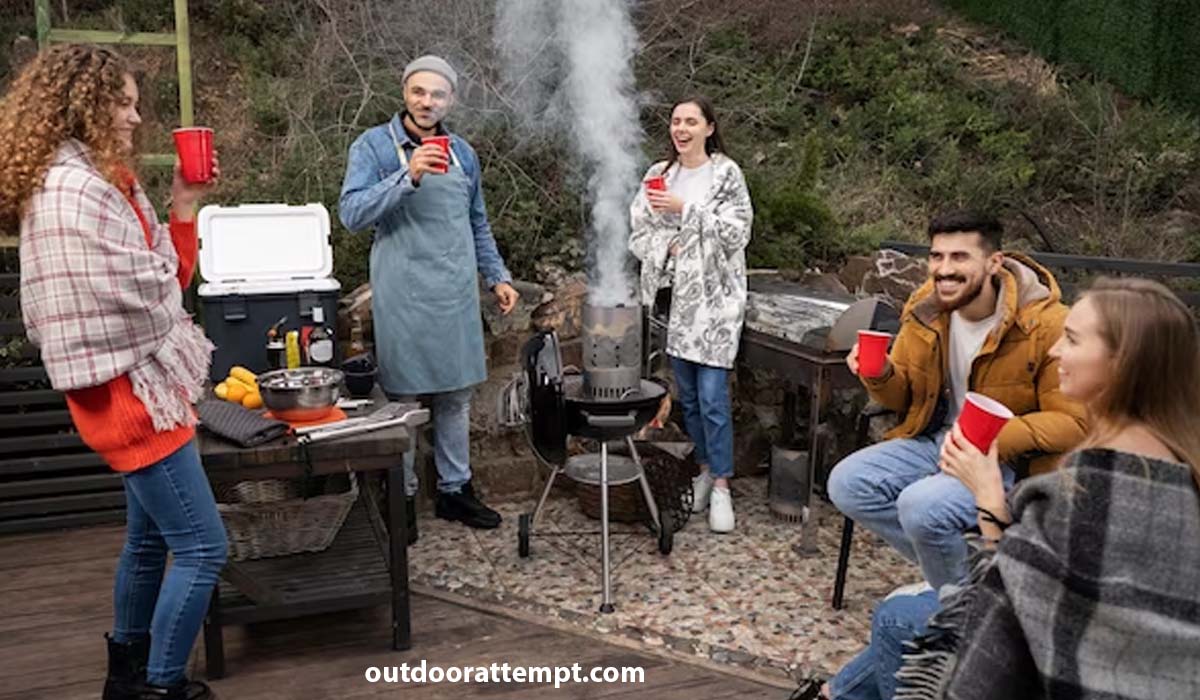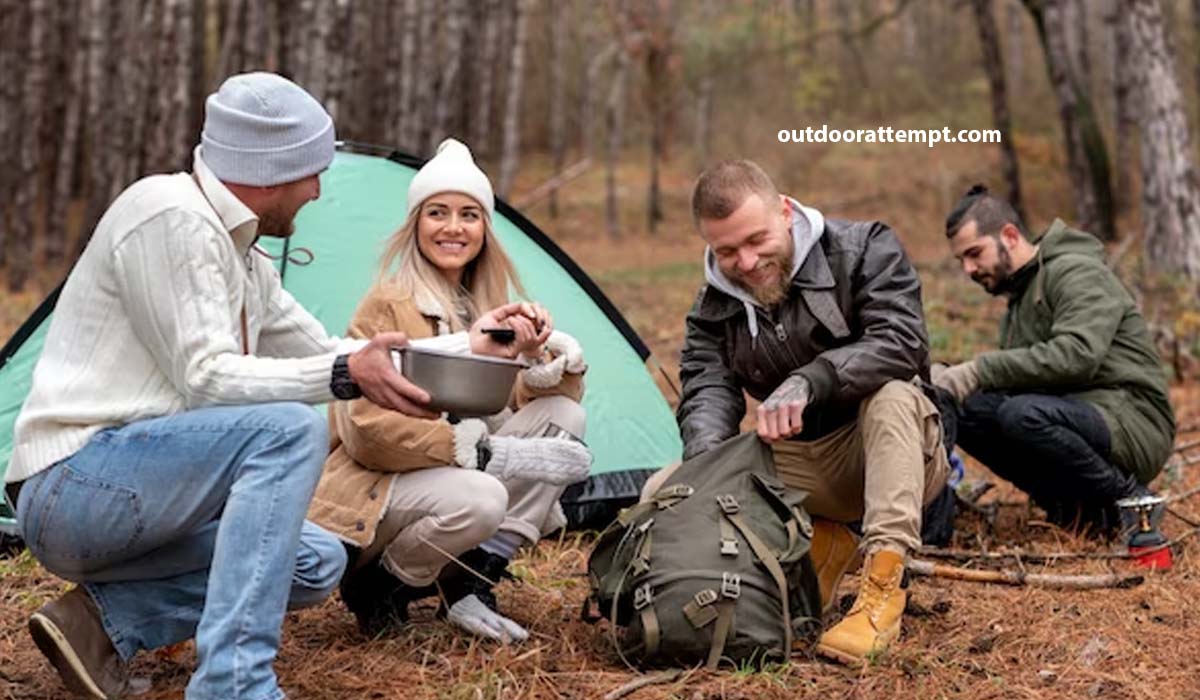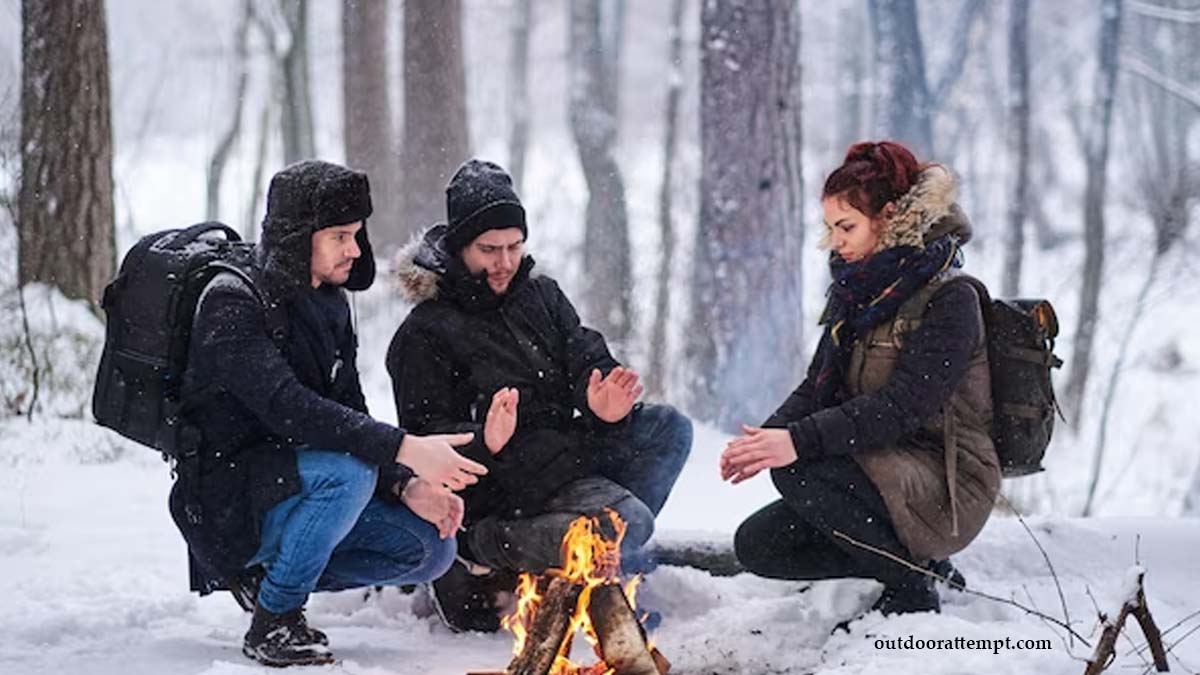Dos and Don’ts for Enjoying a Safe Blaze When enjoying a campfire, it is important to be aware of some safety dos and don’ts.

Some things to keep in mind for a safe campfire include Dos and Don’ts for Enjoying a Safe Blaze:
-Build your fire away from low-hanging branches, bushes, and dry leaves.
-Clear an area around the fire pit down to the dirt.
-Never leave your fire unattended.
-Make sure your fire is completely extinguished before you leave.
There are also some things to avoid doing when around a campfire:
- -Don’t use accelerants to start your fire.
- -Don’t wear flammable clothing.
- -Don’t throw trash or cans into the fire.
- -Don’t put your hands or any other body part into the fire.
Campfire Safety 101
One of the best parts of spending time outdoors is gathering around a cozy campfire. Whether you’re roasting marshmallows, telling ghost stories Dos and Don’ts for Enjoying a Safe Blaze, or simply enjoying the warmth and light of the flames, there’s nothing like a campfire. But while campfires are a lot of fun, they can also be dangerous if you’re not careful. Every year, people are injured or even killed in campfire-related accidents.
To help you enjoy a safe and fun campfire experience, we’ve put together a list of dos and don’ts.
Do:
Choose the Right Location
When you’re choosing a spot for your campfire, it’s important to pick a location that’s far away from anything flammable.

This includes trees, bushes, leaves, and any other type of vegetation. You should also avoid building your fire too close to your tent or camper Dos and Don’ts for Enjoying a Safe Blaze. A good rule of thumb is to build your fire at least 15 feet away from anything that could catch fire.
Clear Away Dead Leaves and Grass
Once you’ve chosen a spot for your fire, take a few minutes to clear away any dead leaves, grass, or other flammable materials. It’s also a good idea to dig a small trench around your fire pit. This will help to contain the fire and prevent it from spreading.
Build a Small Fire
When it comes to campfires, bigger is not always better. A large fire is more likely to get out of control than a small one. So, when you’re building your fire, use small pieces of wood and keep the flames low.
Use a Fire Pit
If you’re going to be building a campfire, it’s a good idea to use a fire pit. Fire pits are designed to contain campfires and prevent them from spreading. If you don’t have a fire pit, you can build a makeshift one by digging a hole in the ground and lining it with rocks.
Put Out the Fire Before Going to Bed
If you’re going to be spending the night at your campsite, it’s important to put out your fire before you go to bed. To do this, add water to the fire pit and stir the ashes until the fire is completely out. You should also make sure that there are no smoldering embers left behind. The best way to do this is to feel the ashes with your hand to make sure they’re cool before you leave.
Don’t:
Use Gasoline or Other Flammable Liquids
Gasoline and other flammable liquids should never be used to start a campfire. These liquids can cause the fire to spread out of control quickly, leading to serious injuries or even death. If you’re having trouble getting your fire started, try using a fire starter kit instead.
Leave Your Fire unattended
If you’re not going to be around to watch your fire Dos and Don’ts for Enjoying a Safe Blaze, it’s best to put it out before you leave. This will help to prevent accidental fires from getting out of control.
Userama
If you’re not sure how to build a campfire, it’s best to avoid using one altogether. If you must use a campfire, make sure to ask someone for help who knows how to build one safely.
Play with Fire
Campfires may look like a lot of fun, but they can also be very dangerous. So Dos and Don’ts for Enjoying a Safe Blaze, it’s important to avoid
Emerging Trends
There are a few emerging trends when it comes to campfire safety. One trend is the use of portable fire pits. These allow you to enjoy a fire without having to build a traditional fire pit. Another trend is the use of fuel sources that are less likely to cause a fire, such as propane or natural gas.

Some safety experts are also predicting that the use of technology will play a role in future campfire safety. For example, there may be apps that help you to determine the safest location for your fire pit. There may also be devices that automatically extinguish a fire if it gets out of control.
Dos and Don’ts
There are a few things you should do to enjoy a safe campfire. First, make sure that you have a fire pit that is designed for use with a campfire. Second, only use approved firewood. Third, never leave your fire unattended. Finally, make sure that your fire is completely extinguished before you leave.
There are also a few things you should avoid doing if you want to have a safe campfire. Never use accelerants, such as gasoline, to start your fire Dos and Don’ts for Enjoying a Safe Blaze. Never build a fire in an enclosed space. And never throw anything into your fire, such as cans or bottles.
What should I do to prepare my campfire?
Location, Location, Location
Before you strike that first match, take a good look around. You’ll want to build your fire at least 15 feet away from your tent, any other structures, low-hanging branches, dry leaves, or grass.
Dig a Pit
Once you’ve found a good spot, use your shovel to dig a small pit for your fire. The pit will help contain the fire and prevent it from spreading.
Clear the Space Around the Pit
Next, clear a 10-foot diameter area around the pit, removing any leaves, twigs, or other combustible materials. This will create a “safety zone” around your fire.
Create a Fire Ring
To further contain your fire, you can build a fire ring out of rocks. If you’re in a developed campground, you may find a fire ring already in place. Never build a fire on top of a pre-existing fire ring.
Collect Your Firewood
Now it’s time to gather some firewood. You’ll want to collect enough wood to last the duration of your fire, plus a few extra pieces in case you need to add more wood later. But don’t collect more wood than you need, as extra wood can serve as fuel for a wildfire.
Choose the Right Wood
When selecting your firewood, opt for logs that are 6 inches or less in diameter. These logs will be easy to handle and won’t take forever to burn. Avoid using thick branches, as they can be difficult to light and will take a long time to burn down.
Find Some Kindling
In addition to logs, you’ll need some smaller pieces of wood, or “kindling,” to help get your fire started. Twigs, small branches, dry leaves, and bark are all good options for kindling.
Build Your Fire
There are many different ways to build a campfire, but the “teepee” method is a good option for beginners. To build a teepee campfire, start by placing three or four large logs in the center of your fire ring. Then, lean smaller logs against the larger ones, forming a cone-shaped structure. Finally, top off your teepee with kindling and tinder.
Light Your Fire
Once your fire is built, it’s time to light it. You can use a match, lighter, or ferro rod to ignite your tinder. Once the tinder is burning, carefully add some of the smaller pieces of kindling to the fire. Then, add larger pieces of wood as the fire grows.
Dos and Don’ts for Enjoying a Safe Blaze
-Be sure to have a shovel, water, and fire extinguisher on hand when starting a campfire.
-Monitor the fire at all times. Never leave it unattended, even for a second.
-Make sure the fire is fully extinguished before going to bed or leaving the area.
-Clear away any flammable debris, such as leaves or sticks, from the area around the fire.
-Don’ts
-Never build a fire in an enclosed space, such as a tent.
-Don’t use accelerants, such as gasoline, to start or maintain a campfire.
-Don’t put glass or foil in the fire. They can break and cause injury.
-Don’t throw trash or other combustible materials into the fire.
The Bottom Line
Campfire safety is essential for anyone who wants to enjoy a safe blaze. By following the dos and don’ts above, you can overcome any challenges and enjoy a safe and fun campfire experience.
